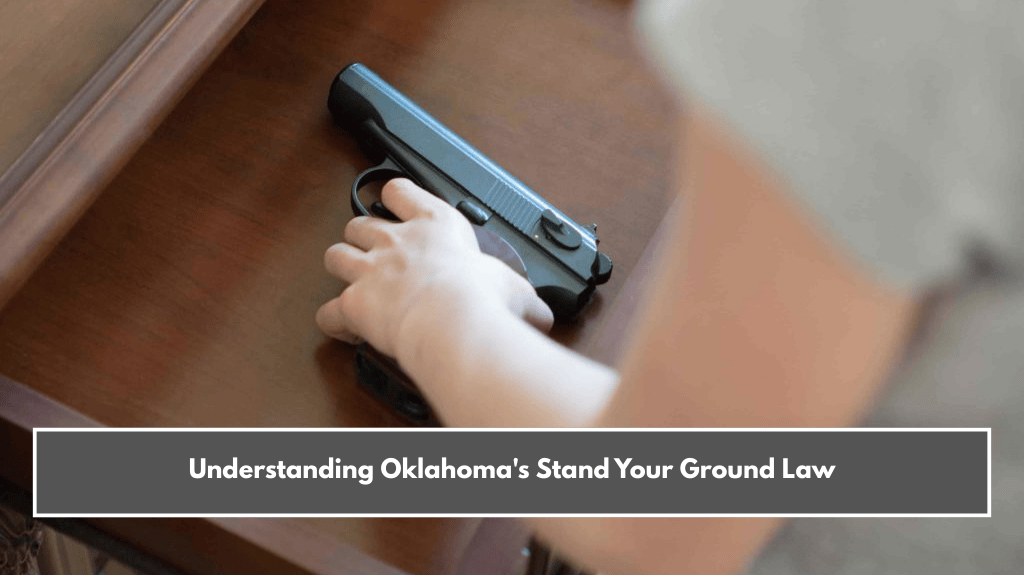Oklahoma’s Stand Your Ground Law, codified in Title 21 of the Oklahoma Statutes (§ 1289.25(D)), is a legal doctrine that permits individuals to defend themselves with force, including deadly force, without the obligation to retreat when faced with imminent threats. This law is part of Oklahoma’s broader self-defense framework, which includes the Castle Doctrine and Make My Day Law, offering robust protections for citizens in situations of danger.
Key Features of the Stand Your Ground Law
- No Duty to Retreat:
Unlike states that impose a “duty to retreat,” Oklahoma allows individuals to use force without attempting to escape first, provided they are in a place where they have a lawful right to be. - Legal Location Requirement:
The law applies only if the individual is in a location where they are legally present, such as their home, workplace, or public spaces like sidewalks or parking lots. - Reasonable Belief of Threat:
The use of force must be based on a reasonable belief that it is necessary to prevent death, serious bodily harm, or the commission of a forcible felony. For example, if someone is threatened by an aggressor in a parking lot and believes their life is at risk, they may use deadly force under this law. - Proportional Force:
The response must be proportional to the threat. Excessive or unreasonable force could invalidate a self-defense claim. - Exclusion for Criminal Activity:
Individuals actively engaged in criminal activities cannot invoke the Stand Your Ground defense. However, minor infractions like outdated vehicle registration do not disqualify someone from relying on this protection.
Comparison with Related Doctrines
Oklahoma’s self-defense laws also include the Castle Doctrine and Make My Day Law, which complement Stand Your Ground:
| Feature | Stand Your Ground Law | Castle Doctrine | Make My Day Law |
|---|---|---|---|
| Scope | Applies anywhere legally present | Applies within one’s home or business | Extends Castle Doctrine to other dwellings |
| Duty to Retreat | No duty to retreat | No duty to retreat | No duty to retreat |
| Use of Deadly Force | Permitted if threat is imminent | Permitted against intruders | Permitted against intruders |
Limitations and Legal Scrutiny
While the Stand Your Ground Law provides robust protections, it comes with limitations:
- The threat must be real and imminent; perceived but minimal threats do not qualify.
- Individuals who are the initial aggressors or committing crimes cannot claim this defense.
- Legal proceedings often scrutinize whether the use of force was justified and proportional.
Legal Implications
Invoking the Stand Your Ground defense can lead to complex legal challenges. Prosecutors may question whether the threat was imminent or whether excessive force was used. In cases involving death or serious injury, navigating these legalities requires professional legal counsel.
Oklahoma’s Stand Your Ground Law empowers individuals to protect themselves and others from imminent harm without retreating. It reflects the state’s commitment to self-reliance and personal safety but demands careful adherence to its provisions. Understanding these laws ensures responsible use of self-defense rights while avoiding legal pitfalls.
Sources:
- https://jpcannonlawfirm.com/2024/04/stand-your-ground-in-oklahoma-when-can-you-fight-back/
- https://www.oklahomalegalgroup.com/practice-areas/self-defense
- http://okcca.net/ouji-cr/8-15A/
- https://www.oklahoma-criminal-defense.com/crimes/oklahoma-self-defense-doctrines
- https://jpcannonlawfirm.com/2024/04/know-your-rights-a-guide-to-self-defense-laws-in-oklahoma/














